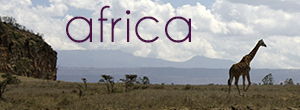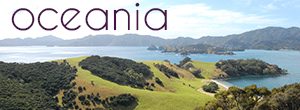After three days in Taganga we are more than ready to head to what has been promised to keep the best beaches in Colombia: Parque Nacional de Tayrona. The bus from Taganga is quick and easy, a little over an hour to the park entrance followed by a few solid hours of hiking with tastes of the spectacular beaches provided to tempt you along the way. The entrance fee to the park is $35,000 COP for foreigners, and a mere $13,000 for locals. In the minivan packed with travelers we sit in bumpy excitement chatting intermittently until the van pulls up to the front gate.
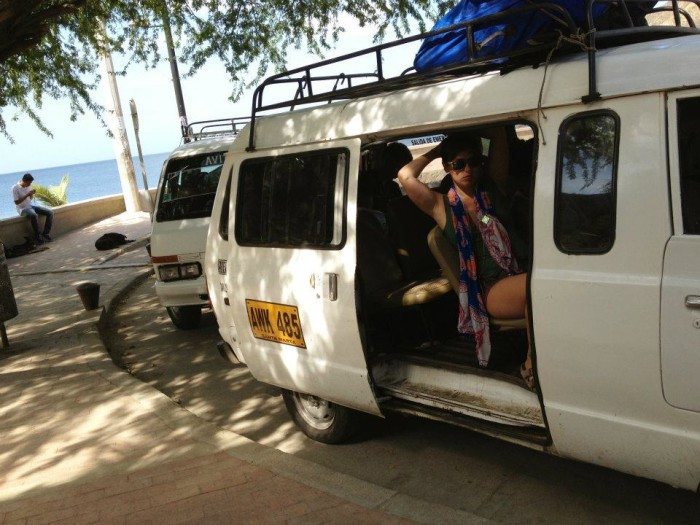
let’s get this show on the road!
As we watch the driver pay for our admission with the money he had already collected, we get out of the van and are instructed to remove any and all plastic bags we may have with us. Confusion spreads among the English speakers. Why Colombians can’t grasp that plastic bags are where you put your trash in a park, not the cause of trash in the park, we are incapable of understanding. Regardless, we open our bags and take all the food we have brought with us out of its convenient plastic bags. We keep one secretly tucked away knowing how useful it will be for our inevitable accumulation of trash. We are forewarned by many that outside alcohol is not allowed in the park and will be confiscated. However, once we throw away our plastic bags, no more attention is paid to our gear and we make our way on into the park wishing we each had a bottle of rum stuffed in our pants.
Instructed to load back into the van we are taken past the gate and to the parking lot, the final point past which vehicles cannot go. As we all pile out of the van there is some kind of issue between the driver and one of the park officials. Incomprehensible Colombian Spanish jets from their mouths without halt. Trying desperately and unsuccessfully to understand what is happening, we watch helplessly wondering why we can’t yet make our way into the park. A Dutch couple from our van suddenly begins to translate.
Our driver has paid for our admission as locals, and attempted to pocket the difference. Clearly in cahoots with the official who gave us our bracelets knowing there wasn’t a single local on the bus, this guy is not in on the scheme, and wants a piece of the action before we can pass. For more than five minutes the driver refuses to fork over the money to the insistent park employee. Finally we are allowed to pass, assuming that the driver has offered a piece of his profits in exchange for his silence. I guess it wouldn’t be traveling if there wasn’t a scam somewhere. Either way, we are finally on our way.
The trail into the beaches is a mild one, but made moderate by the heat that manifests itself on every inch of you, pooling quickly in each and every crevasse it can find. Working our way through the dense vegetation we come up on the first vista overlooking a beach that seems impossible to access, but teases at what we can only hope is to come. We stop for a minute to take a break from our packs and inhale the views and the breeze, but promises of the sea quickly call us on our way.
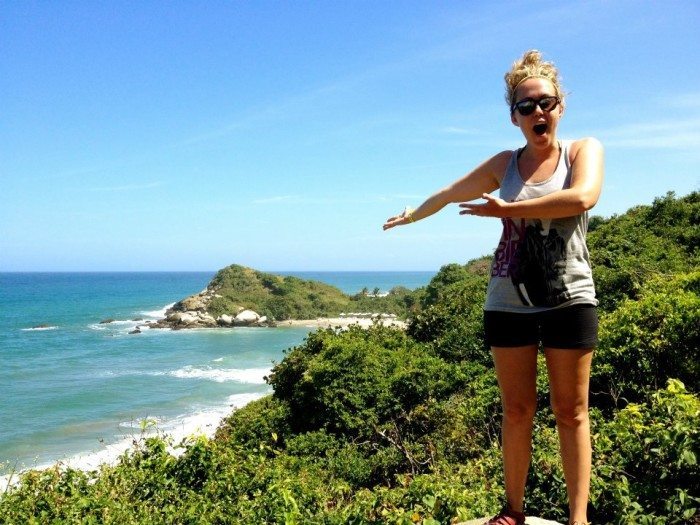
i want to go to there
As the trail winds down towards the shore the sound of the plangent waves grows nearer, and as the turgid, tossing seas echo louder and louder, excitement intensifies equally within us. Finally we break through the brush onto the solace of the pristine shore. For the first time since we stepped foot in Colombia, we are alone with nature, and the ineffable coupling of boundless freedom and minuscule humanity that is only possible in those moments, envelops us both. Throwing my shoes onto the scalding sand I run to the water without a second thought. Knowing the currents in these beaches make them too dangerous to swim, I let the water splash high onto my thighs with each breaking wave and laugh as the cool ocean quickly relieves the heat of the hike. This is what we have been waiting for. But after a few minutes of frolicking it’s time to get back on the trail.
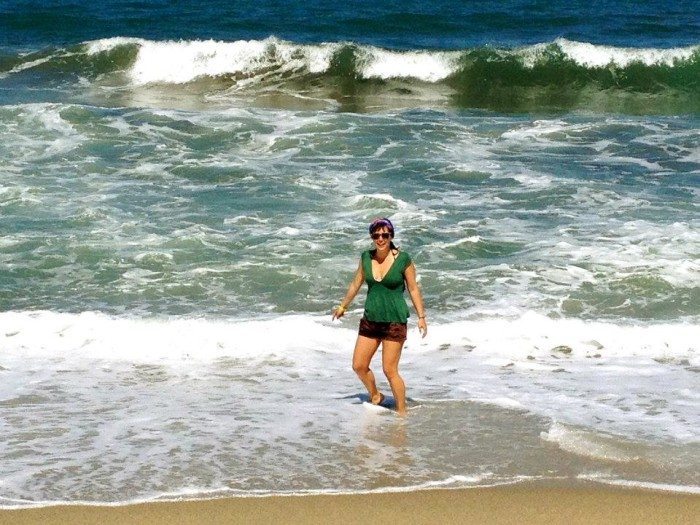
hooooorayyyyy!!!
After about two hours from the start of the hike we reach the first beach camping site, Arricifes. Confused we try to find our way to the trail, unsure of which way to go and frustrated with the cartoonish pieces of painted plywood that pass for maps, but show no actual trails on them. We walk through the campsite and onto the beach deciding to follow the water as far as we can. After another hour or so of hiking, at times climbing through difficult rock trails, at times wandering slowly and shoeless across another breathlessly beautiful beach, we finally arrive at Cabo San Juan.
The last beach in the park is a small isthmus whose zenith is a rocky point atop which sits a covered cabana of hammocks twisting in the ocean breeze. Two bays protected by a rocky barrier reflect the bluest of skies in crystal waters, finally untainted by tires and trash. But when the sun ducks behind the clouds, the wind-hammered sands grow quickly colder and the turquoise waters scowl into dark, slatey-greens. The beach is without question the most picturesque we have seen, but pays the price in the rows of tanned bodies in barely-there bikinis lining the narrow isthmus. We are once again overwhelmed by the ratio of extremely attractive women to completely unappealing men and are both glad we didn’t come on this trip trolling for traveling romance.
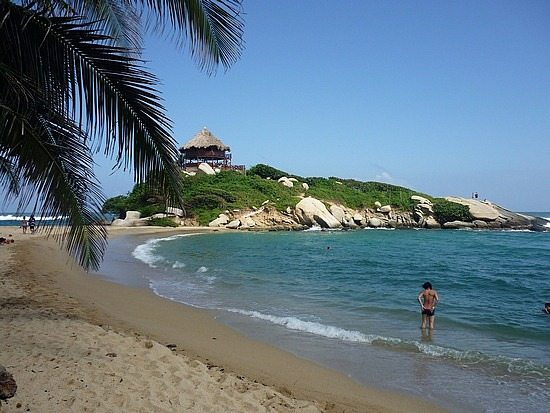
picture perfect
We absorb the last few hours of sunlight available before we set up our tent on the grassy campground, the ground significantly firmer than the sandy beach camping we were expecting, and significantly more expensive to boot. At $15,000 COP per person (about $8 US) to pitch your own tent I think of all the hostels and private rooms around the world I have stayed in for less. Even the hammocks here are $20,000 as once you’re in the park they know you don’t have a choice. We wander around the camp, exploring a few short trails before we retire on the beach with a sunset and a few cervezas, content to be left with nothing but our own company.
As the last light escapes from twilight and the line between sea and sky slowly vanishes, an Argentinian boy approaches our easy laughter with the offer of a spliff. Happy to make some new company we bring our beers and our blanket down the beach a bit to chat with our new-found friends. Their English is far better than our Spanish, but still we struggle to be communicate. Despite our language barrier we manage to find the one most important thing: laughter. And also with these boys we find the next most important thing: whiskey. It’s a bottle of Johnnie Walker scotch which is the closest you can find to whiskey in South America and we are more than happy to let the smokey blend warm our eager bellies.
As time goes on, two of the four Argentinians, with as much English as I have Spanish, wander off to watch some football, and there are only four of us left on the beach. And suddenly a familiar feeling settles around us like a fog. These boys are looking for what every traveling boy is after, and despite the fact that we have told them we have boyfriends, they have already divided, each of them initiating more intimate conversation, and are clearly planning to conquer. Thoughts of the man I love back home sit not stubborn, but calmly in my mind. I am glad they are there and I know this South American stranger has nothing I want.
But a part of me I don’t want to admit exists is still tempted by that dangling freedom. We sit around a campfire while two talented Peruvians sing about love and strum on their guitars for a group of captivated travelers. The nameless stranger puts his arm around me and while I tense with the discomfort of an arm I do not know, I think if he were to kiss me, that it would be hard to turn away. For a moment I imagine the first knowing glance, the gentle approach, the thrill of a spark, but instantly the image turns to ash. I will hate myself if I let it happen. There is ever a glimmer of temptation in the thought of foreign lips, the eternal romance of a moonlit beach, the soft strumming of canorous Spanish song lilting in the air, every ingredient coming to a boil in a recipe for the perfect wandering fling. After all, the traveling mentality is inseparable from impulse and married to spontaneity. Live for each moment, devour each day…
…but the song ends and I snap quickly from the moment’s reverie. I look askance, smile shyly, and make my move to stand up and escape to the safety of my friend. Whatever sliver of a window that never truly existed has closed. A wave of thankful relief washes over me as though I am grateful to my sense for not letting my recklessly romantic imagination get the best of me. Katie and I quickly say our goodnights and make our way to our tent. As we lie silent next to one another the warmth of the scotch, and thoughts of the first man I have truly loved in years, fight to battle the each gusty chill of the wind swept night.
When I left on this trip I was riddled with doubts. In love but confused as to what I wanted the most, half-believing that once I got on the road, I would want nothing more than to revel in that freedom I remember so well and just keep running. Instead, despite that ephemeral glimpse of temptation, all I can think about is the man I left behind, the guilt of forsaking him with a flash of my imagination, and wishing that it were ever his face by the fire, his furtive glance to which I respond. I finally fall asleep to the frightening, yet comforting thought that I am on a whole different kind of adventure this time around.



